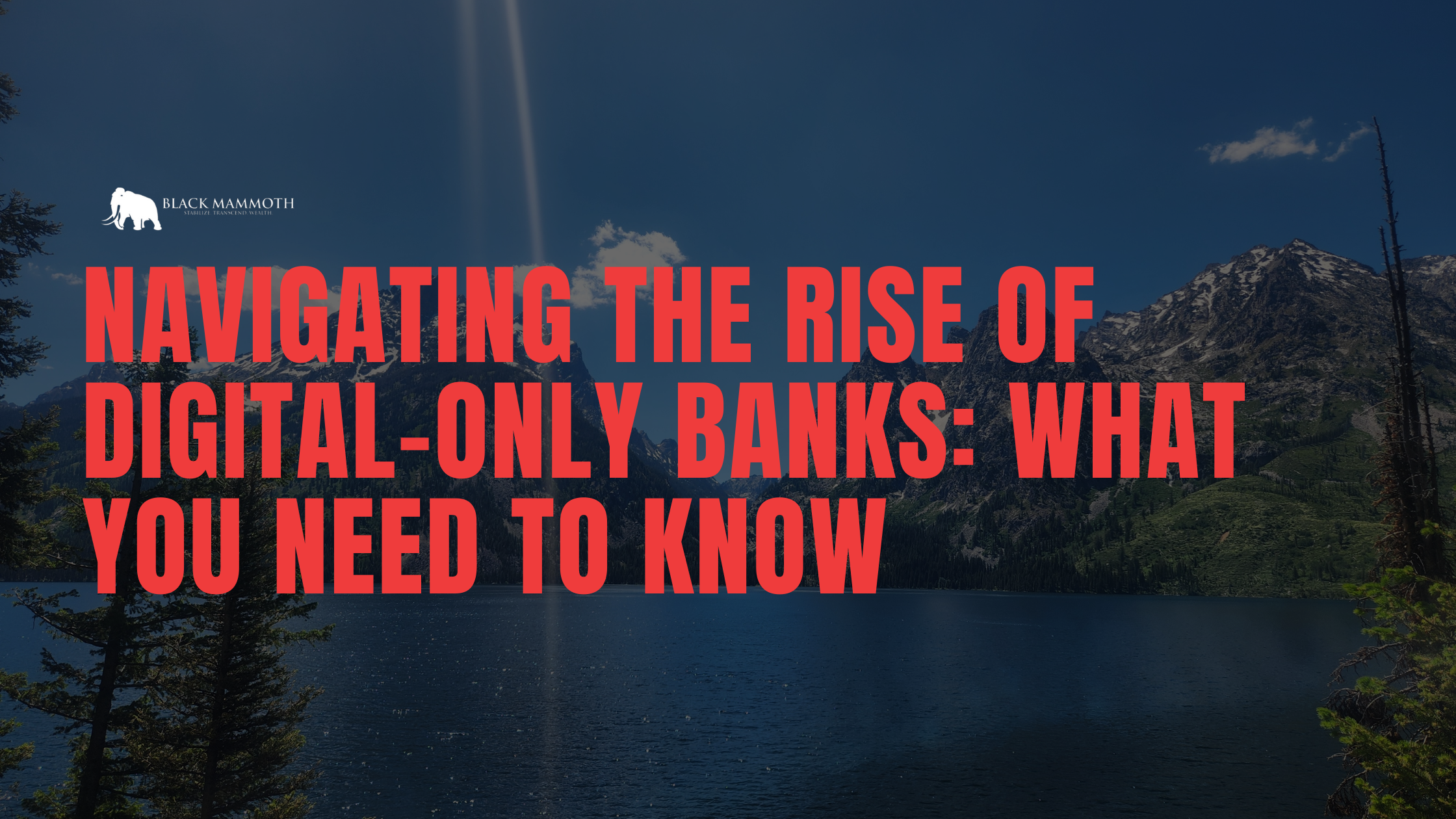Navigating the Rise of Digital-Only Banks: What You Need to Know
Welcome to the Future of Banking — But Is It Built for You?
Let me ask you a real question: when was the last time you actually walked into a bank branch and felt like, “Damn, that was convenient and helpful”? I’ll wait…
The truth is, the banking game has changed—and it’s changing fast. Digital-only banks (aka neobanks) are exploding across the market, promising slick apps, zero fees, high-yield savings, and 24/7 access to your money. No tellers. No lobbies. No waiting in line behind someone arguing about overdraft fees.
Sounds like a dream, right? But here's the kicker: not all that glitters is gold. And if you don’t know what to look for, you could swap one set of problems for another—just in a shinier interface.
Whether you’re a business owner tired of clunky bank hours, a busy parent looking for smarter tools, or someone who's just fed up with the big bank BS—this blog is for you. I’m breaking down the real pros, the hard truths, and the exact steps you need to take if you’re thinking about ditching brick-and-mortar and going all-in on digital banking.
This ain’t some influencer plug. This is the no-BS guide to navigating the rise of digital-only banks—and making sure the one you choose doesn’t just look good, but works hard for your money.
Let’s get into it.
The Pros of Going Digital
1. Lower Fees and Higher Interest Rates
Without the overhead of physical branches, digital banks often pass the savings to you. Expect lower fees and higher interest rates on savings accounts. FDIC+19Nasdaq+19Investopedia+19Synchrony+6meridian-trust.com+6Chime+6
2. 24/7 Accessibility
Manage your finances anytime, anywhere. Digital banks provide round-the-clock access through user-friendly apps.Wikipedia+6Synchrony+6GSB Bank+6Juni+1Moody Bank+1
3. Innovative Features
Many digital banks offer budgeting tools, instant notifications, and seamless integrations with other financial apps. Juni
The Cons to Consider
1. No Physical Branches
If you prefer face-to-face interactions, digital banks might not be for you. There's no option to walk into a branch for assistance. Investopedia
2. Limited Services
Some digital banks may not offer the full range of services that traditional banks do, such as certain loan products or safe deposit boxes.
3. Cash Deposits Can Be Tricky
Depositing cash isn't always straightforward. While some digital banks partner with ATM networks, options can be limited. InvestopediaGSB Bank
Actionable Steps: How to Choose and Transition to a Digital-Only Bank
1. Audit Your Current Banking Needs
Let’s not skip this part. Ask yourself:
How often do I visit a physical branch?
Do I deposit cash regularly?
What services do I use most (e.g., checks, wire transfers, budgeting tools)?
What frustrates me about my current bank?
Why this matters: If you're still depositing checks every Friday or need certified checks for your business, you might need a hybrid solution, not a full jump to digital.
2. Define Your “Must-Haves” and “Nice-to-Haves”
Write this down. Literally make two columns:
Must-Haves: FDIC insurance, mobile check deposit, 24/7 customer service
Nice-to-Haves: High-yield savings, expense tracking, crypto support, no foreign transaction fees
Why this matters: Not all neobanks are created equal. Some are flashy but lack depth. You want substance.
3. Research and Compare Top Digital Banks
Don’t just trust influencers or TikTok trends. Go to the source.
Here are some great tools:
Bankrate Comparison Tool
Nerdwallet's Best Online Banks List
Look for:
FDIC insurance (or NCUA if it’s a credit union)
Fee transparency (no monthly maintenance, overdraft, or ATM fees)
Positive app store ratings (especially iOS/Android support)
Pro tip: Read real user reviews—not just the ones promoted on their website. Hit Reddit. Dig deeper.
4. Open a Secondary Account First
Don’t cut ties with your current bank just yet. Open an account with the digital bank you’re considering and test it out for 30–60 days.
Use it for:
Groceries
Bill pay
Transfers between accounts
Why this matters: It lets you get a real-world feel for the mobile experience, customer service, and processing speeds without throwing your whole financial life into chaos.
5. Move Recurring Transactions Gradually
Automated deposits or payments (like your Netflix, gym membership, or direct deposit) should be transitioned intentionally:
Start with low-risk subscriptions.
Then move utilities or rent.
Last, redirect your paycheck.
Bonus tip: Keep a checklist of which auto-pay accounts are connected to which bank so you don’t get hit with surprise overdrafts.
6. Transfer Your Emergency Fund Last
Once you’re fully comfortable, move over your emergency savings—but ONLY if you’ve confirmed:
Interest rate is competitive
Withdrawal timelines are realistic
You have access to the funds if tech glitches happen
Rule of thumb: Always have a backup access point. Even if that means keeping $1,000 in a local credit union just in case.
7. Close Old Accounts Strategically
Before you ghost your brick-and-mortar bank, do this:
Download all old statements for tax and recordkeeping
Verify no pending transactions
Confirm any linked accounts (Venmo, PayPal, Zelle) are updated
Why this matters: A messy exit can leave you bouncing payments and hurting your credit profile.
So, What’s the Real-World Strategy?
Here it is, straight-up:
Start slow.
Don’t buy into hype—read the fine print.
Prioritize access, security, and service over flash.
Test before committing.
Make the digital bank work for you—not the other way around.
Ready to Stop Guessing and Start Banking Like a Boss?
Listen—navigating the shiny world of digital banks is one thing. But building a wealth strategy that supports your goals, protects your peace, and still leaves room for living? That’s a whole different level.
That’s where the Black Mammoth Power Hour comes in.
This isn’t some cookie-cutter session. This is 60 minutes of straight-up strategy. We’ll look at:
Your current banking setup
Where your cash flow’s leaking
What’s really working and what’s wasting your time
And whether a digital-only bank is right for your lifestyle, your business, and your long-term freedom
You’ll leave with clarity, direction, and an action plan that feels like it was built for you—because it is.
No jargon.
No pressure to buy anything.
Just smart, focused, judgment-free financial truth.

